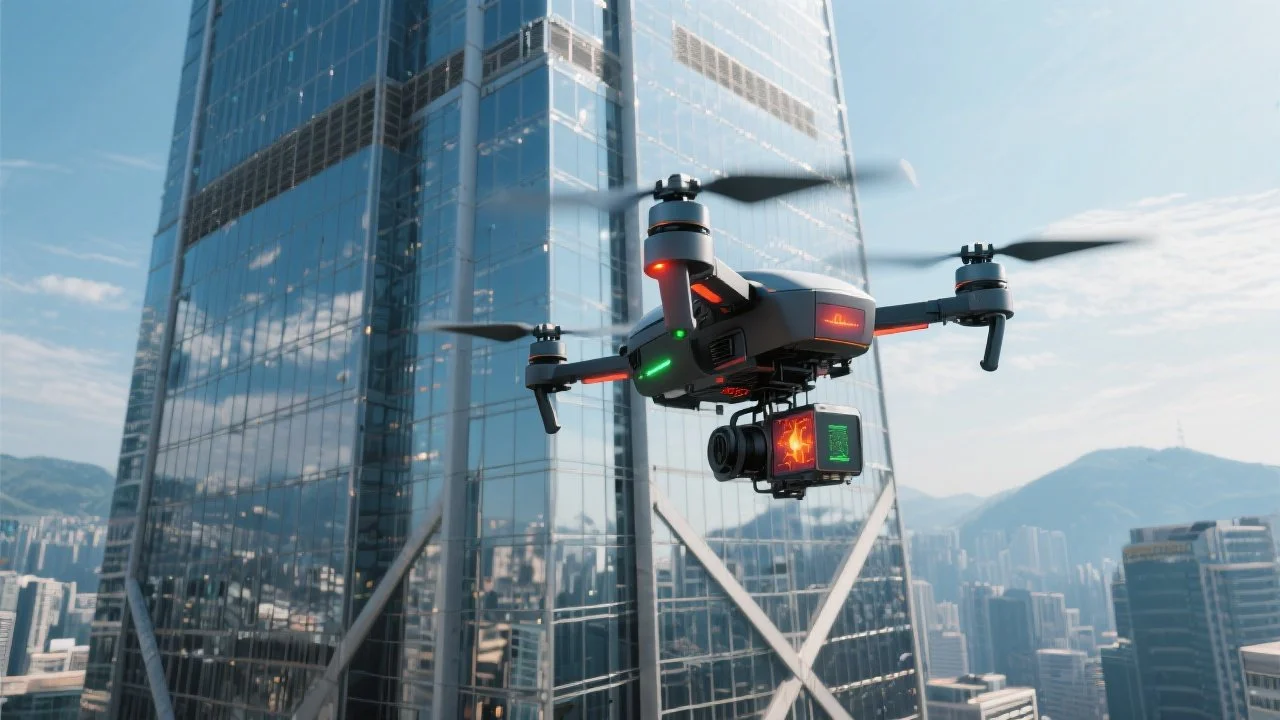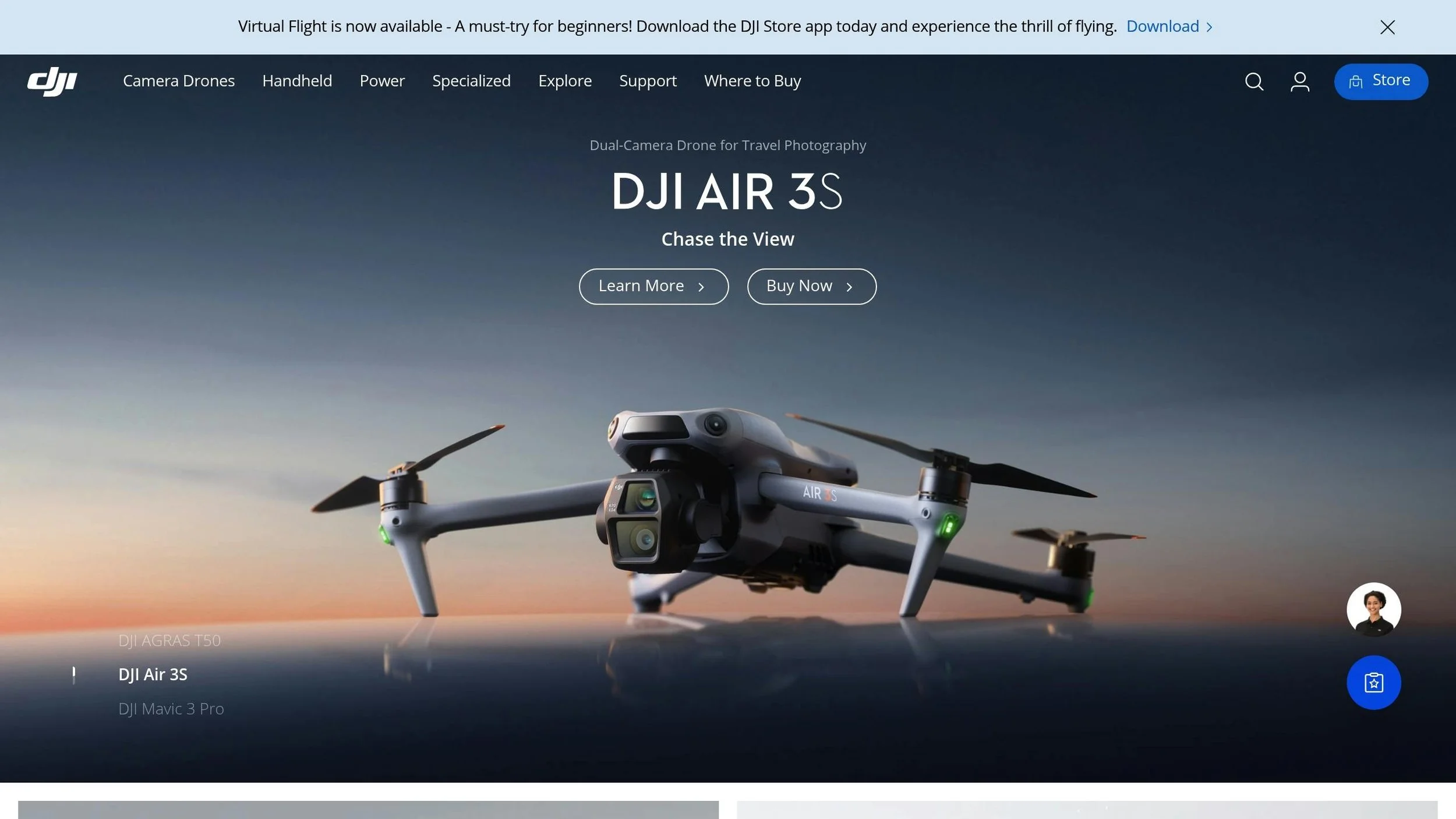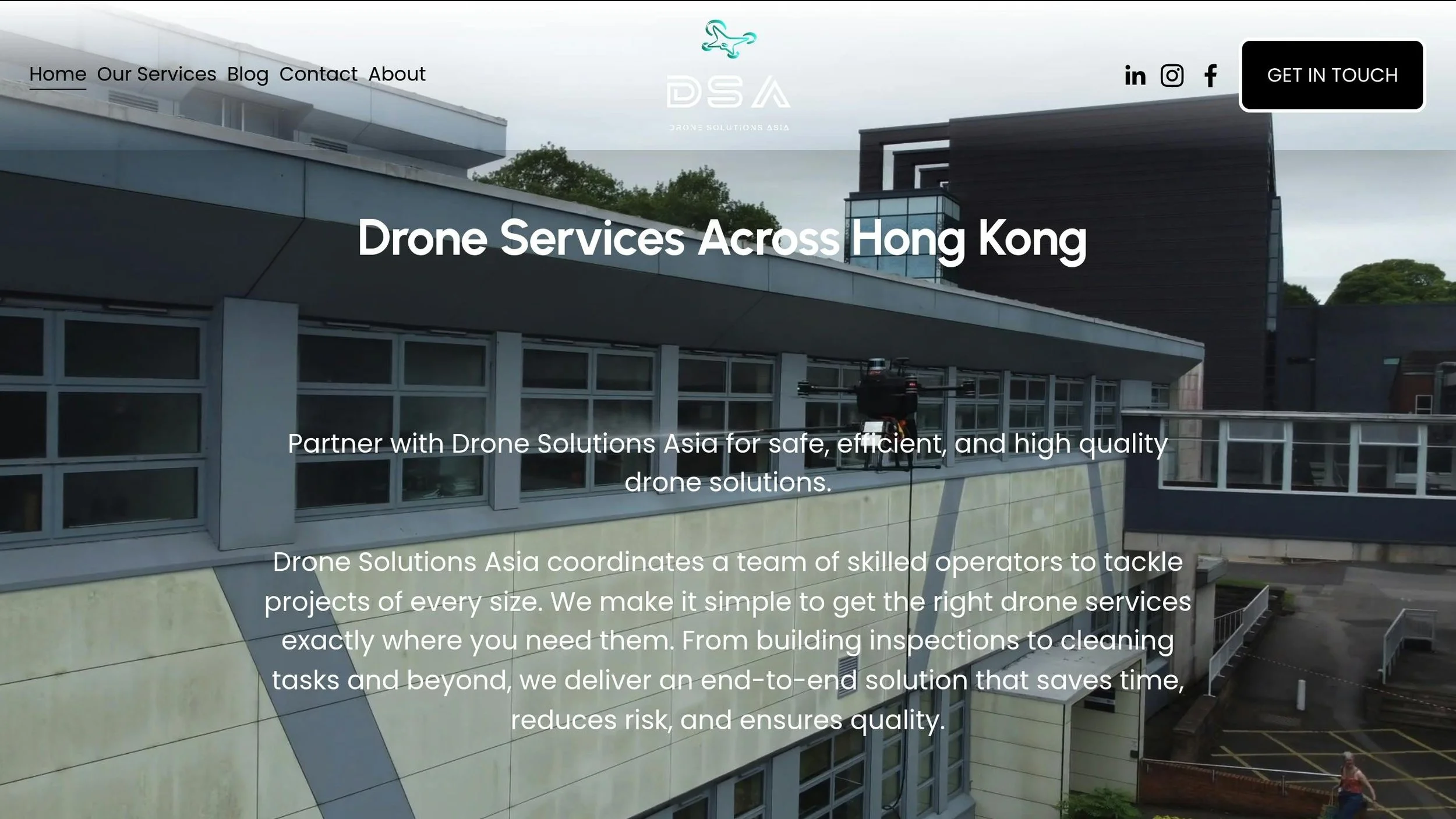Thermal Drones for High-Rise Energy Audits
Thermal drones are transforming how Hong Kong's high-rise buildings are inspected for energy efficiency. Traditional methods like scaffolding or rope access are risky, expensive, and leave areas unchecked. Drones equipped with thermal imaging solve these problems by offering safer, faster, and more detailed inspections, cutting costs by 40% and reducing inspection times by 80%.
Key Benefits:
Safety: No need for dangerous manual checks.
Coverage: Inspect hard-to-reach areas thoroughly.
Efficiency: Scan up to 800m² per hour.
Cost Savings: Reduce expenses by 40%.
In Hong Kong, where skyscrapers dominate the skyline, thermal drones help identify energy losses, insulation issues, and moisture problems with 92% accuracy. This leads to better energy performance and operational savings, with some cases reducing energy use by 15%. For building managers, regular drone inspections are a practical way to optimise energy use while ensuring safety and compliance.
Thermal Drone Inspection Process
Temperature Data Collection
Thermal drones use specialised imaging systems to capture both high-resolution visual and thermal data from building surfaces. This combination helps inspectors identify small issues - like cracks or moisture problems - that may lead to energy loss or inefficiencies [1]. The data collected serves as a foundation for detailed analysis.
Results Analysis
Using the temperature data, photogrammetry stitches images together to create detailed 3D thermal maps. These maps highlight problem areas with precision, and the resulting reports provide recommendations for repairs or improvements [1].
DJI - High-Rise Building Inspection Using Drones ...
Advantages for Hong Kong Buildings
Thermal drones bring practical solutions to Hong Kong’s high-rise energy audit challenges.
Safety Improvements
In a city dominated by skyscrapers, ensuring safety during building inspections is critical. Thermal drones eliminate the need for risky manual checks involving scaffolding, rope access, or gondolas, significantly reducing hazards [1]. These drones not only improve safety but also enable thorough external assessments.
"We partner only with qualified drone operators who follow strict safety standards and meet the regulatory requirements in the country of operation." - Drone Solutions Asia [1]
Comprehensive Building Inspections
Thermal drones can easily access difficult-to-reach areas, providing detailed documentation of entire building façades. For example, a March 2023 inspection of a 40-storey building uncovered 25 key areas of heat loss and water ingress. Targeted repairs based on the findings led to a 15% reduction in energy use [1].
"We use drone-based photogrammetry, thermal imaging, and targeted inspections to identify cracks, moisture infiltration, and other structural issues on buildings, rooftops, and façades. By catching problems early, you can plan repairs, reduce downtime, and maintain a safer environment." - Drone Solutions Asia [1]
Faster and Cheaper Inspections
Thermal drones also save time and money. Inspections can be up to five times faster than traditional methods, covering 800m² per hour. This efficiency reduces labour and equipment costs by 40%, eliminates the need for scaffolding, and minimises disruptions [1].
"Elevate your exterior cleaning with our drone-based approach, delivering up to 5 times the speed of traditional methods and cleaning as much as 800m² per hour, while saving an average of 40% on costs. By removing the need for scaffolding or extensive downtime, we help you maintain a spotless façade with less disruption and greater safety." - Drone Solutions Asia [1]
Research and Results
Recent studies highlight the effectiveness of thermal drones in conducting energy audits for high-rise buildings within Hong Kong's dense urban landscape.
Energy Savings in Tall Buildings
Thermal drone-guided audits have been shown to reduce inspection times by 80% and save up to HK$1.2 million compared to conventional methods [6][7].
Optimal results are achieved during early morning inspections (from 04:00 to 07:00 in winter) when temperatures range between 5–15°C and humidity is below 60%.
A 2024 EA Environmental study provided key insights into energy loss in commercial buildings:
18–22% of energy loss stems from roof-mounted equipment.
Uninsulated rooftop chillers in Wan Chai buildings produced heat plumes as high as 37°C.
These inefficiencies accounted for 19% of total cooling loads [3][5].
In 2023, a research team from HKUST introduced a system using autonomous drones with thermal imaging. Their approach identified 27% more heat loss areas compared to manual methods and achieved 92% accuracy in detecting insulation defects on high-rise facades [8].
These findings emphasise how weather conditions play a crucial role in thermal inspections.
Weather Impact Assessment
Understanding the impact of weather is essential for accurate thermal audits, especially in Hong Kong's subtropical climate. Post-typhoon surveys, for instance, help detect structural weaknesses and water leaks effectively.
The urban heat island effect also significantly affects thermal readings. A 2024 HKU study found that areas like Central and Wan Chai require a +3.2°C adjustment compared to baseline temperatures in the New Territories for accurate assessments [2][4].
These studies highlight the increasing relevance of thermal drone technology in improving energy efficiency for Hong Kong's high-rises, especially as climate conditions grow more unpredictable and energy costs rise.
Conclusion: Next Steps in Drone Energy Audits
Guidelines for Building Managers
Building managers should set up clear protocols for thermal drone inspections to boost energy efficiency. Regular inspections help establish baseline thermal profiles, making it easier to monitor and improve building performance over time.
For smooth implementation, consider these steps:
Ensure inspection areas are free of obstacles and safe for drone operation.
Keep detailed records of heat loss areas and any corrective actions taken.
Schedule inspections regularly to stay on top of energy performance and prioritise upgrades.
These practices can help integrate advanced thermal drone services effectively, allowing building managers to take full advantage of modern solutions.
Drone Solutions Asia Services
Drone Solutions Asia provides thermal imaging services tailored for Hong Kong's high-rise buildings. Their offerings include advanced thermal imaging tools designed to collect precise temperature data in urban environments.
Here’s what their service package includes:
Using these services, building managers can make informed, data-driven decisions to improve energy efficiency.
"Partner with Drone Solutions Asia for safe, efficient, and high quality drone solutions." [1]



